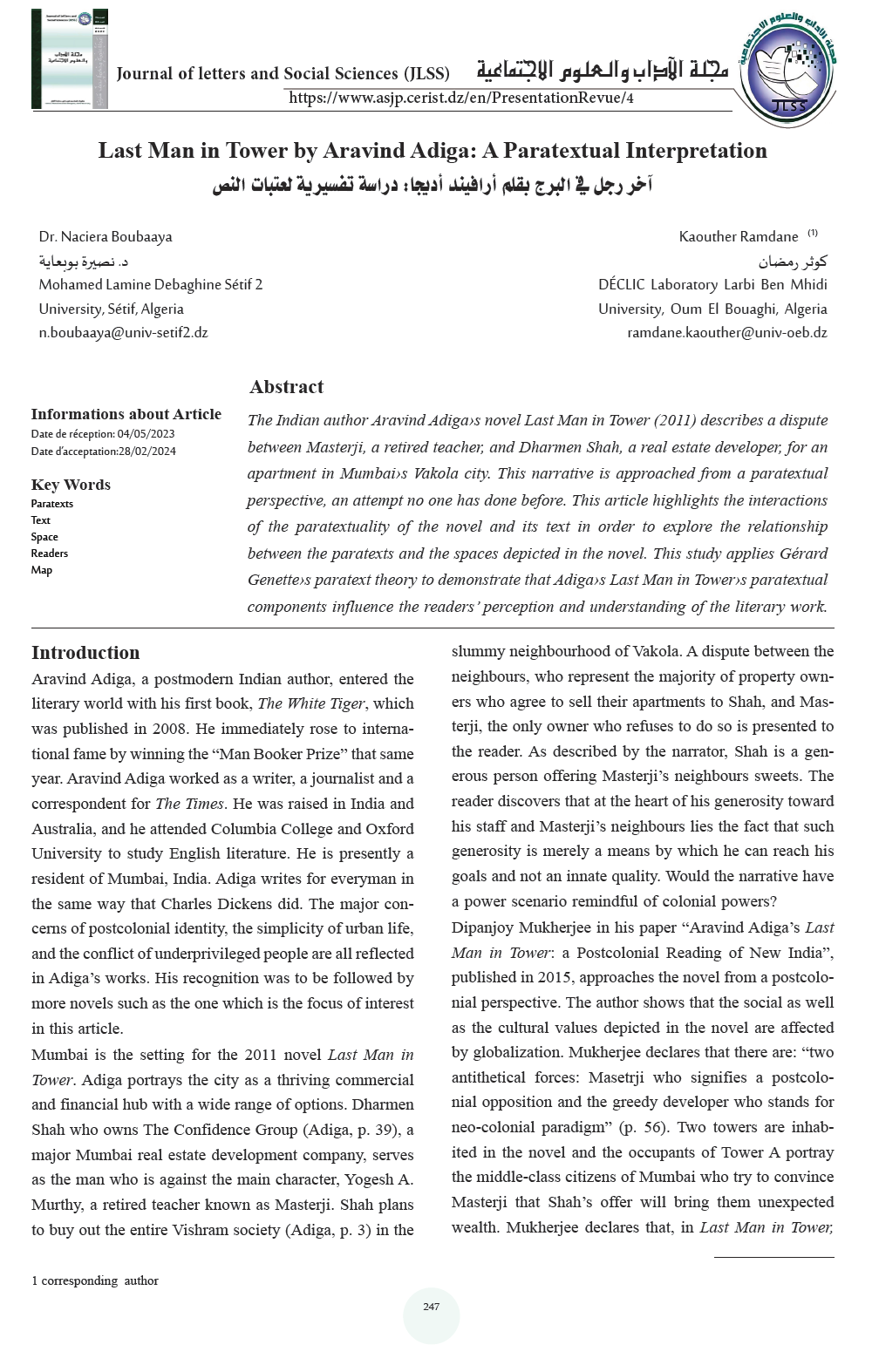Last Man in Tower by Aravind Adiga: A Paratextual Interpretation
Informations about Article: Date de réception: 04/05/2023 ***** Date d’acceptation:28/02/2024
Keywords:
English
Paratexts, Text, Space, Readers, Mapالعربية
عتبات النص، النص، الفضاء، القراء، الخريطةFrançais
Paratextes, Texte, Espace, Les lecteurs, CarteAbstract
English
The Indian author Aravind Adiga›s novel Last Man in Tower (2011) describes a dispute between Masterji, a retired teacher, and Dharmen Shah, a real estate developer, for an apartment in Mumbai›s Vakola city. This narrative is approached from a paratextual perspective, an attempt no one has done before. This article highlights the interactions of the paratextuality of the novel and its text in order to explore the relationship between the paratexts and the spaces depicted in the novel. This study applies Gérard Genette›s paratext theory to demonstrate that Adiga›s Last Man in Tower›s paratextual components influence the readers’ perception and understanding of the literary work
العربية
تصف رواية المؤلف الهندي أرافيند أديغا، تحت عنوان آخر رجل في البرج (2011)، نزاعًا بين المدرس المتقاعد ماسترجي، والمطور العقاري دارمن شاه، حول شقة في مدينة فاكولا في مومباي. يدرس المقال العتبات النصية لهذه الرواية، المنظور الذي لم يتطرق له أحد من قبل، حيث يسلط الضوء على التفاعلات بين عتبات الرواية ونصها لاكتشاف العلاقة بينها وبين الفضاءات المصورة في الرواية. تطبق هذه الدراسة نظرية عتبات النص لجيرارد جينيت لإثبات أن العناصر الشبه النصية لرواية أديغا آخر رجل في البرج تؤثر على إدراك القراء وفهمهم لهذا العمل الأدبي.
Français
Le roman de l’auteur Indien Aravind Adiga Dernier Homme de la Tour décrit une lutte entre Masterji, un instituteur retraité, et Dharmen Shah, un promoteur immobilier, à propos d’un appartement dans la ville de Vakola à Mumbai. Aucune étude d’un point de vue paratextuel n’a été menée parmi les approches critiques de ce roman. Cet article tente de mettre en évidence les interactions entre la paratextualité du roman et son texte afin d’explorer la relation entre les paratextes et les espaces représentés dans le roman. Cette analyse applique la théorie du paratexte de Gérard Genette pour démontrer que les éléments paratextuels du Dernier Homme de la Tour d’Adiga influencent également la façon dont les lecteurs perçoivent et comprennent l’œuvre littéraire

